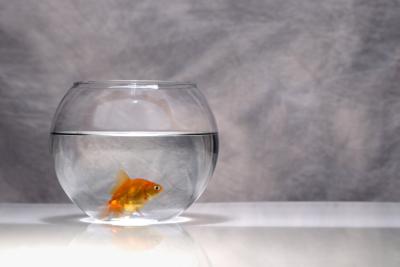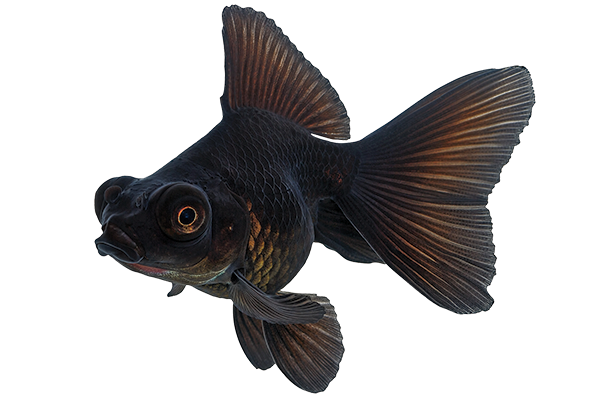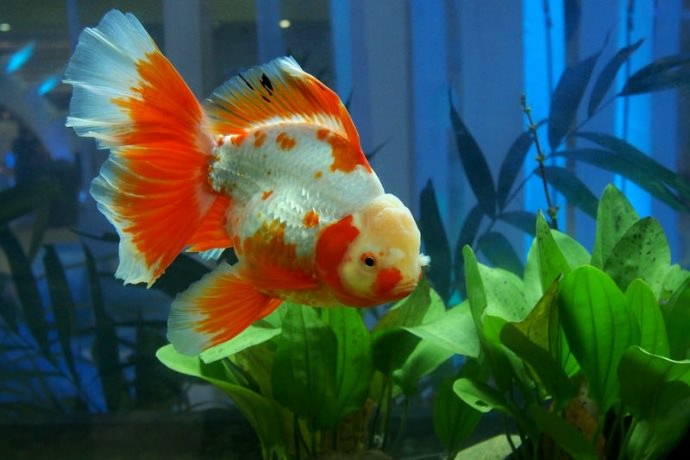Goldfish need a clean, spacious tank with proper filtration and balanced nutrition. They also require stable water conditions and regular maintenance.
Goldfish are popular pets known for their vibrant colors and lively nature. To thrive, they need a well-maintained environment that mimics their natural habitat. A spacious tank allows them to swim freely and grow healthily. Proper filtration helps keep the water clean, removing waste and toxins.
Balanced nutrition with high-quality fish food ensures they receive essential vitamins and minerals. Stable water conditions, including the right temperature and pH levels, prevent stress and disease. Regular tank maintenance, such as water changes and monitoring, is crucial for their long-term health and happiness. Providing these essentials will ensure your goldfish live a healthy, happy life.
Introduction To Goldfish Care
Goldfish are one of the most popular pets. They are easy to care for. Proper care ensures they live long, healthy lives. This guide covers the basics of goldfish care.
Popular Myths About Goldfish
Many believe goldfish can live in small bowls. This is not true. Goldfish need more space to thrive. Another myth is that goldfish have short memories. Studies show they can remember things for months. Some also think goldfish do not live long. With good care, they can live up to 10-15 years.
Why Proper Care Is Crucial
Proper care helps goldfish stay healthy. Clean water is essential. Dirty water can make goldfish sick. They also need a balanced diet. Overfeeding can cause health problems. Proper care includes regular tank cleaning. This prevents the build-up of harmful bacteria.
| Goldfish Needs | Details |
|---|---|
| Tank Size | At least 20 gallons for one goldfish |
| Water Quality | Clean, filtered water with a neutral pH |
| Diet | High-quality pellets or flakes, occasional vegetables |
| Temperature | Between 65-75°F (18-24°C) |
Follow these guidelines to keep your goldfish happy and healthy.

Credit: animals.mom.com
Choosing The Right Habitat
Choosing the right habitat for your goldfish is crucial. A proper environment ensures your fish thrive and stay healthy. Let’s dive into the details of creating the perfect home for your goldfish.
Tank Size Matters
Goldfish need ample space to swim and grow. A small tank can lead to health problems. Bigger tanks offer more room for movement and better water quality.
Consider the following guidelines for tank size:
- Single goldfish: At least 20 gallons
- Each additional goldfish: Add 10 gallons
Remember, goldfish produce a lot of waste. A larger tank helps dilute the waste, keeping water cleaner.
Types Of Goldfish Tanks
Different types of tanks suit different needs. Here are a few options:
| Type of Tank | Description | Pros | Cons |
|---|---|---|---|
| Glass Tanks | Traditional and clear. | Durable, doesn’t scratch easily. | Heavy, can break. |
| Acrylic Tanks | Lightweight and clear. | Easy to move, less chance of breaking. | Scratches easily. |
| Plastic Tanks | Affordable and lightweight. | Easy to transport. | Less durable, can cloud over time. |
Choose a tank that fits your space and budget. Glass tanks are great for clarity and durability. Acrylic tanks are good for ease of movement. Plastic tanks work well if you’re on a budget.
Water Quality And Parameters
Goldfish need clean water to stay healthy. The right water conditions help them thrive. Poor water quality can cause stress and illness. Let’s discuss how to maintain perfect water quality for your goldfish.
The Importance Of Filtration
Filtration is crucial for goldfish tanks. Filters remove waste and toxins from the water. This keeps the water clean and safe. There are three types of filtration:
- Mechanical: Removes solid particles from the water.
- Biological: Breaks down harmful waste into less toxic substances.
- Chemical: Removes dissolved chemicals and impurities.
Using a good filter ensures your goldfish have a healthy environment. It also reduces the need for frequent water changes.
Maintaining Ideal Water Conditions
Goldfish need specific water conditions to stay healthy. Here are the ideal parameters:
| Parameter | Ideal Range |
|---|---|
| Temperature | 65-75°F (18-24°C) |
| pH Level | 7.0-7.4 |
| Ammonia | 0 ppm |
| Nitrite | 0 ppm |
| Nitrate | < 40 ppm |
Keep the temperature stable. Sudden changes can stress your goldfish. Regularly test the water using a water testing kit. This helps you monitor and adjust the water conditions as needed.
Do partial water changes every week. This helps remove harmful substances. Change about 25% of the water each time. Always use a water conditioner. It neutralizes chlorine and other chemicals in tap water.
Follow these guidelines to keep your goldfish happy and healthy.
Goldfish Diet And Nutrition
Goldfish are beautiful pets that need a balanced diet. Proper nutrition helps them grow and stay healthy. Knowing what to feed your goldfish and what to avoid is essential.
What To Feed Your Goldfish
Goldfish need a mix of plant and animal foods. A balanced diet includes:
- Flakes: Special goldfish flakes are a good staple food.
- Pellets: Pellets provide essential nutrients.
- Vegetables: Blanched peas, lettuce, and spinach are great.
- Live Foods: Brine shrimp and daphnia are excellent protein sources.
- Frozen Foods: Offer bloodworms and krill occasionally.
Foods To Avoid
Not all foods are safe for goldfish. Avoid feeding:
- Bread: Bread can cause digestive issues.
- Processed Foods: Human snacks are harmful to fish.
- Fatty Foods: High-fat foods can lead to obesity.
- Spicy Foods: Spices can irritate goldfish’s digestive system.
- Toxic Plants: Some plants are unsafe for goldfish.
| Safe Foods | Unsafe Foods |
|---|---|
| Flakes | Bread |
| Pellets | Processed Foods |
| Vegetables | Fatty Foods |
| Live Foods | Spicy Foods |
| Frozen Foods | Toxic Plants |
Enrichment And Entertainment
Goldfish are curious and intelligent creatures. They need more than just food and a tank. Providing enrichment and entertainment keeps them happy and healthy. This section will explore how to engage your goldfish with toys and decorations, and create a stimulating environment for them.
Toys And Decorations
Adding toys and decorations to your goldfish tank can be fun. Goldfish love exploring new objects. Here are some ideas:
- Floating Toys: These are great for goldfish to nudge around.
- Rings and Hoops: Goldfish enjoy swimming through these.
- Mirrors: Place a mirror outside the tank. Goldfish will interact with their reflection.
Make sure all toys are safe and non-toxic. Avoid sharp edges that could harm your fish. Rotate toys to keep things fresh and interesting.
Creating A Stimulating Environment
A stimulating environment is crucial for your goldfish. It keeps them active and engaged. Here are some tips to create one:
- Varied Substrate: Use gravel and sand to create different textures.
- Live Plants: Add plants like Java Fern or Anubias. They provide hiding spots and oxygen.
- Caves and Tunnels: Goldfish love exploring caves and tunnels. Use rocks and decorations to create these.
Change the tank layout occasionally to keep your goldfish curious. A well-decorated tank is not only beautiful but also beneficial for your goldfish’s mental health.
Remember, a happy goldfish is a healthy goldfish. Providing enrichment and entertainment ensures they lead a fulfilling life.
Companionship And Social Needs
Goldfish are more than just pretty pets. They have specific social needs. Understanding their companionship requirements helps them thrive. Here, we’ll explore their social nature and suitable companions.
Can Goldfish Live Alone?
Goldfish can live alone, but they get lonely. They are social creatures by nature. A lonely goldfish may become bored and stressed. This affects their health and lifespan.
Keeping a goldfish alone can lead to behavioral changes. They might swim less and eat less. To keep your goldfish happy, consider providing companionship.
Suitable Tank Mates
Choosing the right tank mates for your goldfish is crucial. Not all fish are compatible. Here are some suitable companions:
- Other Goldfish: Goldfish of similar size make great companions.
- White Cloud Mountain Minnows: These are peaceful and can live in similar conditions.
- Rosy Barbs: These fish are calm and get along well with goldfish.
- Snails: Snails help clean the tank and don’t bother goldfish.
Avoid aggressive fish. Fish like Betta or Cichlids can harm goldfish. Also, avoid small fish that can be eaten by goldfish.
Here is a quick comparison table for easy reference:
| Suitable Tank Mates | Compatibility Level |
|---|---|
| Other Goldfish | High |
| White Cloud Mountain Minnows | Medium |
| Rosy Barbs | Medium |
| Snails | High |
Always monitor new tank mates. Ensure they get along well with your goldfish. A harmonious tank keeps all fish healthy and happy.
Routine Maintenance
Maintaining a healthy environment for your goldfish requires regular care. Routine maintenance ensures your fish thrive. Proper care involves cleaning schedules and monitoring health and behavior. Let’s delve into these essential tasks.
Cleaning Schedules
A clean tank is vital for goldfish health. Follow a consistent cleaning schedule to prevent buildup of harmful substances.
| Task | Frequency |
|---|---|
| Partial Water Change | Weekly |
| Gravel Vacuuming | Every Two Weeks |
| Filter Cleaning | Monthly |
- Partial Water Change: Replace 20-30% of the tank water weekly.
- Gravel Vacuuming: Remove debris every two weeks using a gravel vacuum.
- Filter Cleaning: Rinse the filter monthly with tank water.
Monitoring Health And Behavior
Regularly observing your goldfish helps detect health issues early. Pay attention to their behavior and appearance.
- Observe Daily: Check for signs of illness such as spots, lumps, or unusual swimming.
- Feed Properly: Ensure your goldfish receive a balanced diet.
- Check Water Parameters: Use a test kit to monitor pH, ammonia, nitrite, and nitrate levels.
Healthy goldfish are active and have bright colors. If you notice any changes, consult a vet. Keeping an eye on their health ensures a happy, long life for your fish.

Credit: www.aqueon.com
Common Health Issues
Goldfish are generally hardy pets, but they can face health problems. Knowing the common health issues helps ensure your goldfish live a long, healthy life. This section covers recognizing signs of distress and offers preventive care and treatments.
Recognizing Signs Of Distress
Watch for changes in behavior and physical appearance. Key signs include:
- Loss of appetite
- Gasping for air at the water surface
- Erratic swimming
- Clamped fins
- White spots or patches
- Red or inflamed gills
If you notice these symptoms, act quickly. Early detection can save your goldfish.
Preventive Care And Treatments
Maintaining a clean tank is crucial. Follow these steps:
- Perform regular water changes
- Monitor water temperature and pH levels
- Use a good filtration system
- Avoid overfeeding
Here are some common treatments for specific issues:
| Health Issue | Treatment |
|---|---|
| Ich (white spots) | Raise water temperature and use Ich medication |
| Fin Rot | Antibiotics and improved water quality |
| Swim Bladder Disease | Feed peas and avoid floating foods |
By following these guidelines, you can keep your goldfish healthy and happy.
Advanced Care Considerations
Goldfish are more than just beautiful pets; they require careful attention. Advanced care considerations ensure their health and longevity. This section explores breeding goldfish and dealing with aging. These topics are crucial for dedicated goldfish enthusiasts.
Breeding Goldfish
Breeding goldfish can be a rewarding experience. You must prepare a separate breeding tank. The tank should have a temperature of around 68°F to 74°F (20°C to 23°C).
Choose healthy and mature goldfish. Males usually have white spots on their gill covers. Females are typically rounder and fuller.
Feed them high-protein foods to encourage spawning. Use brine shrimp or bloodworms. This helps in developing their reproductive organs.
Introduce spawning mops or plants in the tank. Goldfish will lay their eggs on these surfaces. Once eggs are laid, remove the parents. This prevents them from eating the eggs.
Keep the water clean and well-oxygenated. Eggs will hatch in 4 to 7 days. Provide tiny food like infusoria or liquid fry food for the newborns.
Dealing With Aging
Goldfish can live up to 20 years with proper care. Aging goldfish need special attention.
Monitor their diet closely. Older goldfish may need softer foods. Soak pellets before feeding or switch to gel foods.
Check their vision. Aging goldfish may develop eye problems. Ensure they can find food easily.
Maintain optimal water quality. Older goldfish are more sensitive to poor water conditions. Test water parameters regularly.
Provide a calm environment. Avoid sudden changes in their habitat. Stress can affect aging goldfish more severely.
Regular vet check-ups are essential. An expert can spot health issues early. This can extend your goldfish’s life.
Understanding these advanced care considerations ensures your goldfish stay healthy and happy for years.

Credit: www.about-goldfish.com
Conclusion
Goldfish care is simple with the right knowledge. Provide clean water, balanced diet, and adequate space. Monitor water quality regularly. Ensure they have a stress-free environment. Proper care will keep your goldfish healthy and happy. Remember, a well-maintained tank leads to thriving goldfish.
Enjoy your aquatic pets!
